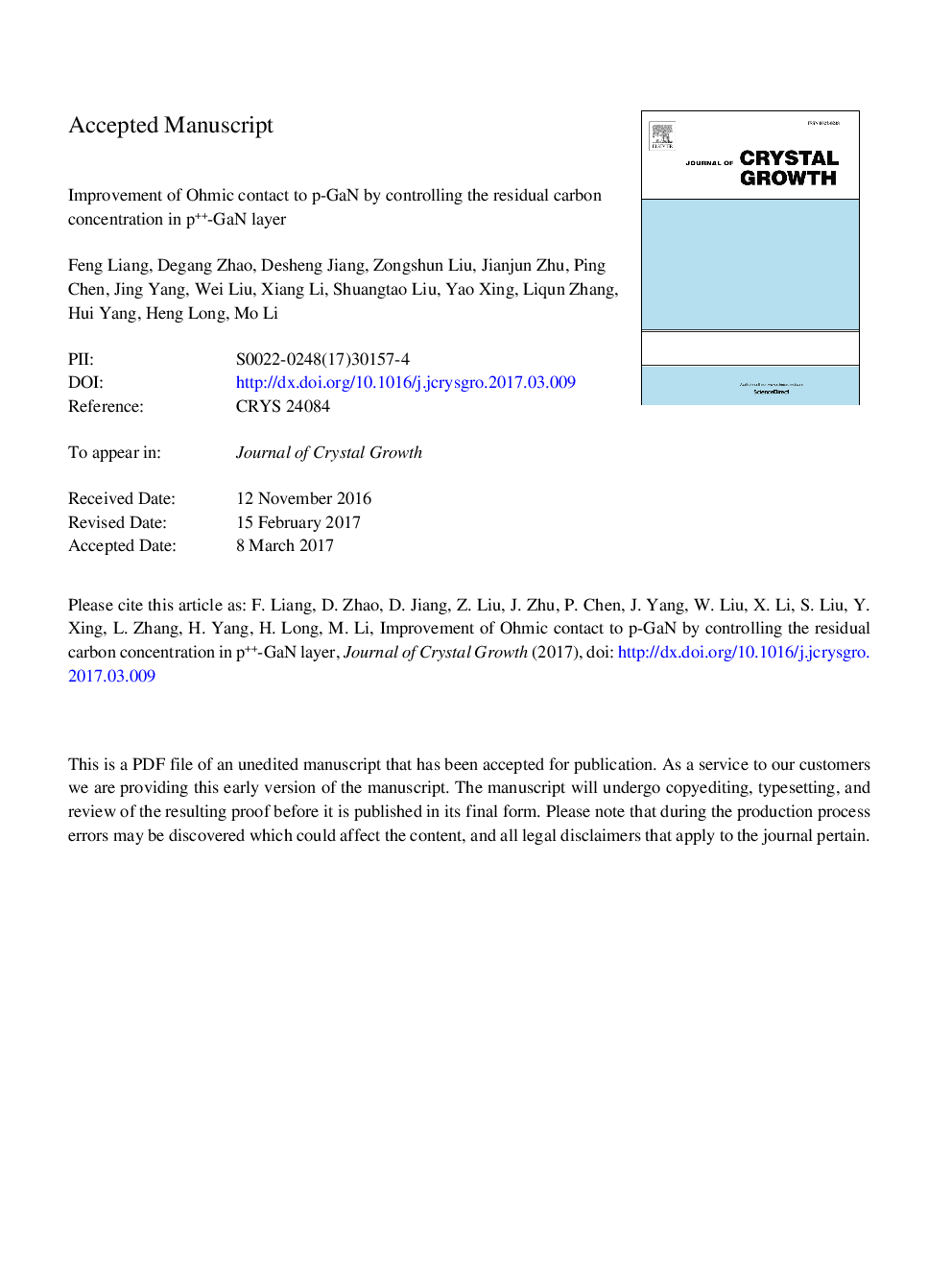| Article ID | Journal | Published Year | Pages | File Type |
|---|---|---|---|---|
| 5489488 | Journal of Crystal Growth | 2017 | 18 Pages |
Abstract
Growth conditions are used to control the residual carbon impurity incorporation in p++-GaN layers. Specific contact resistance (Ïc) with various residual carbon concentrations has been investigated through the circular transmission line model (CTLM) method and secondary ion mass spectroscopy (SIMS) analysis. A correlation between residual carbon and Ïc indicates that incorporation of proper carbon impurity can be an advantage for Ohmic contact, although carbon can also act as a compensating donor to worsen the Ohmic contact at a very high concentration. Finally, Ïc is improved to 6.80 Ã 10â5 Ω Ã cm2 with a carbon concentration of 8.3 Ã 1017 cmâ3 in p++-GaN layer, when the growth temperature, pressure and flow rate of CP2Mg and TMGa are 940 °C, 100 Torr, 3 μmol/min and 28 μmol/min, respectively.
Keywords
Related Topics
Physical Sciences and Engineering
Physics and Astronomy
Condensed Matter Physics
Authors
Feng Liang, Degang Zhao, Desheng Jiang, Zongshun Liu, Jianjun Zhu, Ping Chen, Jing Yang, Wei Liu, Xiang Li, Shuangtao Liu, Yao Xing, Liqun Zhang, Hui Yang, Heng Long, Mo Li,
